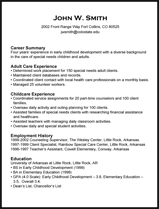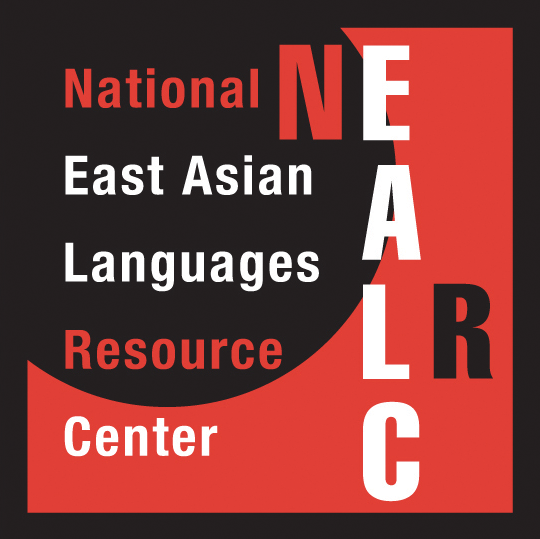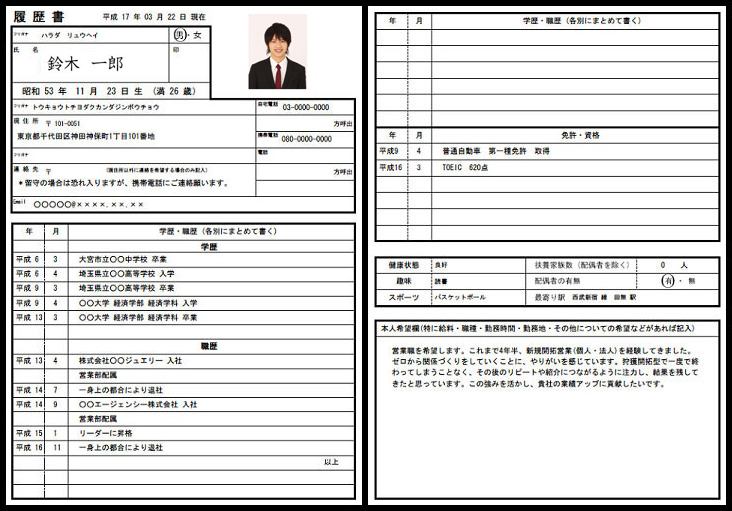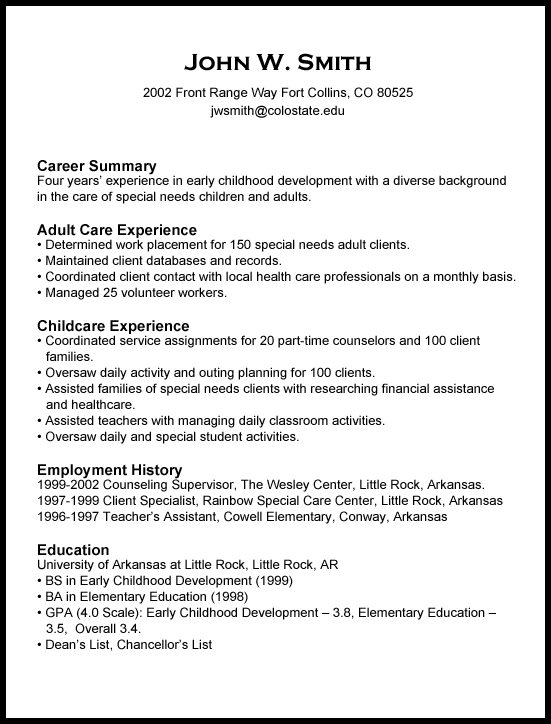Now it’s time to make the newcomers’ experiences relevant to your own situation. Key #3 will help you respond to the following dilemma: How can you reconcile the differences between the two types of framing (Fig. 6) in your own life when you find yourself in a situation where both types intersect? Key #3 deals with practical aspects of bridging this dilemma: that is, how does one actually navigate between these two different-and-opposing types of social frame?
You should now be able to glimpse that this dilemma formed the basis for the stepping stone hazards the newcomers had to navigate to reach adulthood in Japan. Key #3 also opens up the possibilities for understanding the navigation dilemmas faced by newcomers with different framing perspectives. This includes the navigation process in reverse that Japanese and other Asians (from Type 1 societies) must accomplish to become at home in the U.S. and European (Type 2) societies. This module will help you to:
- evaluate your framing situation wherever you happen to move abroad.
- navigate actual dilemmas newcomers often face, such as applying for jobs in Japan and the U.S.
- understand not only the ‘I’ to ‘Uchi’ pathways of newcomers to Japan, but the pathways of Japanese newcomers to the U.S./Europe, who must navigate in the reverse direction.
Figure 7: The Entry Point Disconnect

1. Moving Abroad: Understanding Your Frames
Let’s assume you’re planning to move somewhere new. Choose the figure below that best represents your own framing perspective. To do this you first need to identify whether your own framing coincides with Type 1 or Type 2. Then click your icon at one of the two starting points in Figure 8.
Figure 8. Navigating Social Frames
Notice that either starting point offers you two pathway options—but one looks easy to follow, while the other looks more difficult. These pathway options coincide with the two framing perspectives introduced in 13.2.
Option 1: You can move to a society where framing relationships between individual and society will be similar to those in your own society.
Option 2: You can enter a society where people frame these relationships differently—meaning that they will foreground and background individual and society in reverse from what you are accustomed to (a situation similar to that of the newcomers to Japan).
Option 1 is pictured as a level pathway because you can remain within your own social type. Your acclimation process is likely to be smoother because the framing of individual/society relationships will usually approximate those of your own society closely enough that you can acclimate—and even reach adulthood—without having to encounter framing issues much at all. For example, a British newcomer moving to Australia, an American going to Ireland, or an Argentinian going to Spain could expect to remain largely within the framing perspectives each is used to. This doesn’t mean they wouldn’t have to adjust and acclimate in many ways; it simply means that their adjustments won’t require navigating between the Type 1 and 2 framing perspectives pictured in Figure 7 above.
Option 2 is pictured as more hazardous precisely because you are moving between Type 1 and Type 2 societies. Your acclimation process is likely to be more difficult because you will encounter framing differences when you enter your new society (just as all the newcomers in this program did). The rest of this module will orient you on the navigational challenges of bridging these frames. But keep in mind that the entire program is also meant to help you bridge frames like this successfully.
2. Navigating Job Applications across Social Frames: The Japanese rirekisho and US/European job resumes.
This section will assist newcomers in navigating the dilemmas each faces when applying for jobs in the other type of society. Type 2 newcomers to Japan must deal with the rirekisho (the Japanese version of the job resume), while Type 1 newcomers to Europe or the U.S. must navigate the job resume.
(1) Take a look at the sample formats for both rirekisho and job resume below:
Rirekisho Sample (click to enlarge)
Resume Samples (click to enlarge)
(2) Now compare the applicant’s main goals in preparing a rirekisho versus a US/European job resume. These are summarized below:
| Rirekisho | U.S./European Job Resume |
|
Format
|
Format
|
|
Applicant’s Goals
|
Applicant’s Goals
|
|
Focus
|
Focus
|
| School Applications | School Applications |
|
Focus
|
Focus
|
(3) The Rirekisho/Resume Dilemma: How can you, as a newcomer, deal with the requirements of the rirekisho—or the job resume?
For newcomers who move between social types, the process of applying for jobs or school admission presents the following dilemma:
- As a Type 2 newcomer to Japan, how can you present yourself as always fitting effectively within a social frame when for you, a job resume or university application focuses on highlighting your individual abilities and achievements?
- As a Type 1 newcomer to the U.S. or Europe, how can you present yourself as highlighting individual achievements and goals when for you, the rirekisho format focuses on presenting yourself as always fitting effectively within a social frame?
For Type 2 applicants: which of the responses below do you think most appropriate for navigating the Rirekisho Dilemma?
- Fill out the rirekisho but ask if you can also include a resume. This way you will be able to cover both bases.
- Try to fold as much of your resume into the rirekisho as possible (for example, expand the space for listing licenses, certificates, skills and hobbies to include the main parts of your resume).
- Make a serious attempt to fill out the rirekisho in the required manner, even though some of your resume achievements don’t fit in well.
Notice that Type 2 applicants have to foreground their weaker area—participation in social frames; and background their stronger area—individual skills. Yet their backgrounded individual skills are often highly regarded by Type 1 employers. So your strong point when applying in a Type 1 situation is the combined package of your abilities within a social frame, plus your individual skills. This is what will help you get the job.
Type 1 applicants also have to foreground their weaker area—the individual perspective—while backgrounding their strengths of extensive teamwork experience. But if you can manage to develop the individual (‘I’) perspective, this combined package should also give you an edge with Type 2 employers, who will regard your teamwork skills as highly desirable. You can see how this works in the case below. (Type 2 applicants: Read this too!)
3. Navigating School Applications across Social Frames: A Japanese Applies to MBA Programs in U.S.
Maya Ono, a Japanese female, is applying to MBA programs in the U.S. As a permanent employee of Sakura Manufacturing Co. she is an uchi member of the company, which has agreed to sponsor her for the MBA. The application process puts Maya in the opposite situation of the newcomers to Japan: She is a Type 1 applicant seeking admission to a U.S. business school program, which will view her as a Type 2 individual. So she needs to navigate from a Type 1 to a Type 2 social environment. Let’s see what challenges she faces.

Maya’s qualifications for the MBA program include: Strong quantitative and analytical skills, interactive problem-solving skills, and abilities to successfully challenge the status quo.
During her 5 yrs. business experience, she carried out comprehensive cost-reduction and restructuring of energy in a 90-plant complex, and also resolved serious communication gaps in a joint Japan-South Korea project. Maya is a well-qualified applicant.

Application requirements for MBA programs:
- Tests: TOEFL, GMAT (general aptitude)
- Essays outlining personal accomplishments, career interests and goals.
- Interview
Now let’s take a look at how Maya approaches the admissions process:
Figure 9: The School Admissions Disconnect
What is striking about these two perspectives is the degree of disconnect. Even though Maya is well-qualified in terms of the admission requirements, her expectations for presenting her qualifications (in resume and essays), and for how she will be evaluated show an almost complete disconnect from the evaluation procedures of the U.S. business schools. Moreover, Maya’s expectations were widely shared by other Japanese applicants, including her cohorts in an application prep course she attended, and in the admission briefing sessions for the schools she applied to. These attendees all shared the same expectations—and the same disconnect.
Yet many of these applicants did manage to gain admission to the U.S. schools they applied to. In fact, Maya herself managed to do so. If so, how did Maya manage to overcome the initial disconnect, and meet the evaluation expectations of the U.S. MBA schools? Maya’s application process is shown in the pathway below.
Figure 10: The ‘Uchi’ to ‘I’ Pathway of a Japanese Applicant to U.S. MBA Programs
Points to Take Away:
1. Notice that Maya’s pathway to success in the MBA application process moves in the opposite direction from that of the newcomers shown in Parts 3 and 4. Maya’s major task on her pathway is to differentiate an ‘I’ that is separate from ‘uchi’, which becomes the focus of her resume accomplishments, career interests and goals. Maya is a member of the Sakura Company ‘uchi’ during the application process above because Sakura is sponsoring her for an MBA program abroad. They will fund her tuition and salary with the expectation that Maya will continue to work for Sakura after her degree.
2. Maya makes continual progress along her pathway, with each step based on those preceding it. Yet even though she learns to successfully construct essays from an ‘I’ focus, she continues to view her applications from an ‘uchi’ vantagepoint that focuses on test scores, and her own scores make her certain she won’t be accepted to any MBA Program.Maya’s persistence here clues us in to the importance of framing, which we don’t ordinarily notice. Even when we move to new places we keep our old framing—and ignore the discrepancies that emerge (just like the newcomers in this program ignored their initial disconnects). Only when these discrepancies become too disruptive to ignore are they taken into account. So only after Maya is accepted by every school she applied to (and even awarded a scholarship!) does her old way of framing become unsustainable. Explaining her acceptances finally makes her grasp the importance of the essays to her admissions, and this produces a gestalt shift. She finally sees the reality of the ‘I’ focus! Maya’s prolonged reluctance to acknowledge her framing discrepancies is not extraordinary, but a natural part of the reframing process.
3. Yet Maya’s perspective of herself as a member of uchi doesn’t mean that she lacks individuality. Maya has many career accomplishments that demonstrate individual achievements. These include singlehandedly challenging her company’s energy policies and problem-solving serious communication gaps in a joint project in South Korea. Yet she carried these out from a vantagepoint within ‘uchi’. This shows that the ‘I’ and ‘uchi’ perspectives are not mutually exclusive. Both individual and social frame exist in each perspective—each with a different emphasis. But this raises an intriguing question as Maya starts her MBA program: could she eventually become a Type 2 individual and lose her ‘uchi’ self?
4. Navigating Marriage across Social Frames: Revisiting the ‘I’ to ‘Uchi’ Pathway of Devita, a Foreign Spouse in Japan
We can raise a similar question about the newcomers in this program—especially those who reached uchi adulthood. Did they retain some of their own individuality? Or did they become completely absorbed into the uchi frame as members? To answer this question we’ll revisit the ‘I’ to ‘Uchi’ pathway of Devita—whom you’ve already met in Part 4. Devita’s pathway is particularly relevant, since as a spouse, she potentially has the deepest and most long-standing connection to uchi of all the newcomers. If so, how did Devita experience the reframing process? What happened to her individual ‘I’ as she became a long-standing ‘Uchi’ member? (See Devita’s original pathway.)
Figure 11: Revisiting the ‘I’ to ‘Uchi’ Pathway of Devita, a Foreign Spouse in Japan
Points to Take Away:
1. Like Maya, Devita has no idea of framing when she and her new Japanese husband move to Japan to live with his parents. As a spouse, (and new ‘uchi’ member) she is expected to quickly absorb the ways of ‘uchi’ by careful observation—rather than explicit instruction. Yet as an individual ‘I’, she faces a disconnect at her entry point: How can she absorb the ways of ‘uchi’ when she has no idea of ‘uchi’? Devita thinks she is doing just fine as she works with her mother-in-law. But her mother-in-law is increasingly concerned that Devita doesn’t pick up on the ‘uchi’ practices going on around her, and wonders what is wrong with her new daughter-in-law. When she suddenly bursts into tears at the dinner table, Devita is also reduced to tears by the shock of her evident failure, when she was trying so hard to help. She feels like she is in some kind of quicksand. Their mutual feelings that “things aren’t adding up”—and no one has any idea why—are major clues that this is a framing problem.
2. Devita’s situation is salvaged by Otoosan’s good sense in approaching the initial breakdown between his wife and Devita. Otoosan advises his wife to be explicit. She must show Devita how to do things in ‘uchi’, rather than expecting her to “pick things up”. Otoosan somehow realizes that as a newcomer Devita doesn’t understand what it is she needs to know (although no one is aware that this involves reframing). He makes Okaasan into a teacher and then advises Devita to be a good student, and “follow” exactly what Okaasan shows her. The relationship Otoosan sets up between his wife and daughter-in-law allows Devita to gradually reorient her individual ‘I’ perspective to that of an individual within ‘uchi’. Devita’s flawless assumption of Okaasan’s duties when she is suddenly taken ill showed that she had successfully absorbed this ‘uchi’ perspective. It was her absorption of ‘uchi’ that now allowed the family to absorb her into ‘uchi’ as a bone fide member. Devita has successfully navigated the initial disconnect by reframing.
3. But Devita’s very success at reframing her relationship perspectives from ‘I’ to ‘uchi’ also raises questions about her individual self. What happened to Devita’s former self when she was absorbed into ‘uchi’? Did entering ‘uchi’ weaken her ‘I’? Did she lose her ‘I’ altogether? To find this out we contacted Devita and put these questions to her. She responded that she felt her individual self was still intact; that becoming an individual within ‘uchi’ hadn’t weakened her ‘I’. She thought she was able to maintain her ‘I’, even within ‘uchi’, by becoming aware that she could still shift between these two kinds of ‘I’ by backgrounding and foregrounding. She regarded learning these shifts as crucial to her adaptation to ‘uchi’. For example, initially, she learned to background her individual self in the context of her ‘uchi’ social frame, but she could still foreground it in her contacts with foreign friends and relatives, and on her return visits to the U.S.But gradually she realized that her everyday reality was more subtle than an either/or situation between an individual ‘I’ and an individual within ‘uchi’. As she adapted to the ‘uchi’ social frame over a long time period, she became aware that her individual ‘I’ was present, even when supposedly backgrounded within ‘uchi’. She then became adept at realizing the occasions when it was advantageous to foreground her individual ‘I’ even in her ‘uchi’ situation. Life within ‘uchi’ became increasingly interesting as she learned to make use of such foregrounding and backgrounding occasions.
4. Both Maya’s and Devita’s experiences help us understand how newcomers moving between Type 1 and Type 2 perspectives can navigate their initial disconnects through reframing. Devita’s case further shows us how a newcomer can sustain her own individual perspective when she ceases to be a newcomer, as she is absorbed into ‘uchi’ membership. Here learning to shift between the two perspectives—through foregrounding and backgrounding—is crucial.
5. Your Guide to Reframing: Putting Together the ‘I’ to ‘Uchi’ Experiences of all the Newcomers
Now we’ll help YOU respond to the kinds of framing dilemmas shown in the cases above. Can YOU manage to navigate between these two different-and-opposing types of social frames? Below are some guidelines for reframing.
Figure 12: the Pathway to Adulthood: Reframing YOUR Relationship Perspectives

First Steps in reframing—from either direction
- Maya and Devita’s pathways show us that newcomers moving either way between Type 2 and Type 1 societies face the same disconnect—but in reverse. At her entry-point Devita completely overlooked the existence of the ‘uchi’ social frame, and viewed everything from an individual perspective. Maya initially overlooked the reality of the individual ‘I’-frame and organized her MBA applications totally from an ‘uchi’ perspective. You need to figure out where you fit in this movement. Which side (‘I’ or ‘Uchi’) will you be likely to overlook?
- At your entry point your biggest task is to become aware of the opposite frame (either ‘I’ or ‘Uchi’) which is outside your own frame of reference. Until you manage this, you’ll still be inside a big disconnect—which will cause you to “misread” what’s going on around you (just like the newcomers did in this program).
- You, too, face the same challenge as Maya and Devita: how can you grasp that your “framing” is out of synch, if you’re unaware of framing to begin with? What kinds of clues can push—or nudge—a newcomer to see that the problem at hand is a framing problem?How can newcomers manage to start the reframing process before they have an inkling of what they are unable to see—namely frames?
- These challenges make the start of the reframing process the most difficult step. But this doesn’t mean it’s impossible. Notice that almost all the newcomers managed to begin to reframe—that is, to start along the pathway from ‘I’ to ‘Uchi’, (or ‘Uchi’ to ‘I’). Maya managed to start reframing through the assistance of her coach, who directed her to focus on the admissions essays. Devita managed to start through the intervention of her father-in-law, who directed his wife to teach Devita explicitly. For newcomers to Japan, you can now see why your “expert” is a crucial guide (even without being explicitly aware of frames!).
Below we have organized a range of possibilities for each step along the ‘I’ to ‘Uchi’ pathway, gleaned from the newcomers’ experiences in this program. In the next module we’ll include examples of pathways that move in the opposite direction and pathways that don’t require Type 1 or 2 reframing.
Figure 13: A Guide to Reframing: The ‘I’ to ‘Uchi’ Pathway for All Newcomers—including YOU
Points to Take Away:
|
1. Is “growing up” in Japan worth the effort? Is growing up in any other society worth it—especially if you move between social types |
2. Do I have to get all the way to uchi adulthood? How much navigation along any of these pathways is required? Do I have to become an insider? |
3. I’m worried that I’ll lose my self if I become an uchi member. I’m worried I’ll lose my ability to relate as an uchi member if I become a ‘selfish’ ‘I’. |
It’s obviously easier to move to a society that’s the same social type, because if you share similar frames—especially for things as basic as your individual relationship to your social frame—then how much you have to adapt is going to be much less. Yet whichever type you identify with, there will be many societies in the world of the opposite type. For example, most Asian societies are Type 1, while European and North American societies are Type 2. In our increasingly global world, more people in both these areas want to live, study, work, and marry across these types. As you can see from Maya and Devita’s experiences (as well as the other newcomers), the learning curve (the pathway) is certainly challenging. Yet the rewards must be equivalent to the challenges. So the challenge of each step literally gives you a huge learning experience, because reframing (or understanding other ways of framing) expands your horizons exponentially. This increases your horizons—and consciousness—enormously. And it’s all gain—you don’t lose any of your ‘self’.
Each “step” of expansion you make gives you a greater increase. So, you can go ‘inside’ as far as you can, or are comfortable with. Any of the stepping stones—even just being a good guest—in Japan will give you an awareness of the shift from ‘I’ to ‘uchi’. You can remain a good guest (like Prof. Witherspoon) and learn a lot. Or you can go on, as Devita did, and achieve insider status, while continuing to gain insights over many years. This depends on you.
Rather than thinking about what you might lose, think of all that you’ll gain. Maya who is going from ‘Uchi’ to ‘I’, is just beginning of her experience, and has only gotten the first glimpses of the ‘I’. She’s now begun her MBA program which is providing her with more challenges, which she’s enjoying so far. Because she’s an adult she’ll keep these ‘uchi’ skills, but add to them the capabilities of relating as an individual ‘I’. If Devita represents one model, an American who has entered ‘Uchi’ but still retained her individual ‘I’; then Maya represents the opposite direction, of a Japanese who retains her ‘uchi’ abilities but gains facility in interacting in international business situations in Type 2 social frames. So, as difficult as these challenges can be, aren’t we far better off in a world where more people are able to navigate between these types?)
We appreciate your feedback of part 5 and the website as a whole!


















